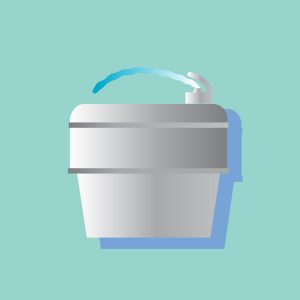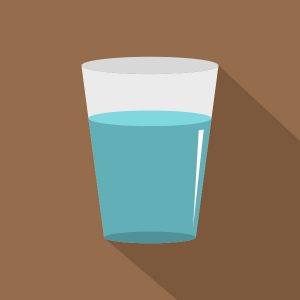By. Cara Wilking, JD
Introduction
Access to safe and appealing drinking water in schools is a key strategy to build healthy habits that children will use for life to maintain a healthy body weight and to support overall health. Strategies to increase tap water use can reduce the environmental impact of bottled water, and when paired with efforts to reduce sugary drink consumption, can reduce a school’s overall plastic bottle waste. This article provides a summary of findings and policy recommendations from a twenty-state review of policies for drinking water quality and access in public schools. The overarching goal of the study was to identify existing policies and policy changes that can be implemented to achieve increased drinking water consumption by children and to ensure drinking water is safe and appealing.
About the Study
State-level policies that relate to drinking water quality and access in public schools were reviewed and summarized in individual state profiles and a summary report. The twenty states included in the study were: California, Florida, Georgia, Illinois, Maryland, Massachusetts, Michigan, Minnesota, North Carolina, New Jersey, Ohio, Oklahoma, Oregon, Pennsylvania, South Carolina, Texas, Virginia, Washington, and Wisconsin. One legal researcher reviewed and summarized state policy provisions relevant to drinking water quality and access in public schools that were adopted and/or in effect as of June 2017. The following state policy domains were included:
- School building standards
- School nutrition standards
- School sanitation standards
- School facilities inventory requirements
- School joint purchasing provisions
- Food safety codes
- Plumbing codes
- Childhood lead poisoning prevention program regulations
Findings
Drinking water availability in public schools is primarily governed by state plumbing codes and school facilities standards. Drinking water quality may be subject to state policies requiring monitoring at the tap. Schools participating in the National School Lunch Program (NSLP) and other federal child nutrition programs also must comply with federal minimum standards for drinking water availability during mealtimes.
General requirement to provide drinking water at no cost to students: State-level school nutrition policy can include a general drinking water access requirement. To date, state school nutrition policy has not been widely used to require access to drinking water throughout the school day at no cost to students. States can enact a clear statewide policy to require that drinking water be available at no cost to students during the school day, and during activities held on school grounds outside of regular school hours.
Drinking Fountains: Increased use of tap water to reduce bottled water use and consumption of sugary drinks depends upon access to safe, appealing, and readily accessible plumbed drinking water for students. State plumbing codes and school building construction requirements for drinking fountains in school buildings typically require a set ratio of fountains to students (e.g. 1 per 100 students) but are rarely otherwise tailored to the unique needs of students in school buildings. States can ensure that policies for school drinking fountains address adequate access during peak cafeteria usage times; fountain access in areas commonly used beyond the regular school day; weather appropriate fountains in outdoor spaces; and an adequate number of plumbed bottle filling stations to meet the needs of the student body.
Cups: While disposable cups may be seen as an additional source of solid waste to be avoided, research shows that children drink more water when provided with a cup. Moreover, other beverages like milk and juice that are available during school mealtimes are provided to students in individual containers; cups are routinely used to serve water to young children in child care centers; and children and adults use cups or other individual containers for water at home and in the community. None of the states reviewed have an affirmative requirement that cups be provided for water during mealtimes. States can include in school nutrition standards a requirement that cups for drinking water be available in food service areas during mealtimes.
Joint Purchasing: States generally permit joint purchasing whereby a school district can participate in a purchasing collaborative to expand the range of products available and reduce the price of items sought. Participating schools can encourage purchasing collaboratives to create model contracts and negotiate competitive prices for drinking water supplies, durable equipment, and services like cups, clear reusable water bottles, water filters and filter servicing, bottle filling stations, and tap water dispenser equipment.
Water Quality: School water quality is dependent upon the quality of drinking water piped to school buildings from a public water supplier or an on-site well, and the condition of school building plumbing and fixtures that come into contact with water after it enters the school building. This study examined policies for monitoring water quality after it enters the school building and found that ten of the twenty states reviewed have a policy for water quality monitoring at the tap. These policies vary widely in terms of whether they are voluntary or mandatory; adequately funded; one-time, snapshot testing or ongoing monitoring; utilizing a health-based standard for lead in drinking water; and/or administered through a publicly accessible, statewide reporting system.
The following are key considerations for states that may adopt a new statewide testing program or refine an existing program:
- Apply a health-based lead action level (e.g. the American Academy of Pediatrics recommends a standard of 1 ppb).
- Utilize plumbing system surveys to identify sources of potential lead contamination that can be immediately addressed with point-of-use filtration and scheduled for permanent removal regardless of whether snapshot testing produces an actionable lead level.
- Utilize actual school facilities data to determine funding needs for ongoing testing and remediation.
- Make testing results data publicly available through a centralized system.
School Facilities Data: Accurate school facilities data is necessary to assess the scope and cost of water quality and access improvements needed in public school buildings. Seven of the states reviewed for this study periodically collect statewide school building condition information including plumbing system information. To better capture the actual state of school drinking water infrastructure and budgetary needs, states can revise state school building condition survey instruments to include questions about school water supply, plumbing systems, water quality monitoring, and the age and condition of drinking water outlets.
Conclusion
There remain important policy gaps as to fundamental issues of tap water safety and drinking water access in schools. Statewide tap water testing programs for public school buildings vary widely, and health-based standards for lead in drinking water have yet to be widely adopted in policies applicable to drinking water in schools. A number of policy opportunities exist, including policies to better provide drinking water at no cost to students during mealtimes and when using school facilities beyond the school day. The policy approaches identified can be refined, replicated, and expanded upon to improve overall drinking water access and quality or adopted by individual school districts. Tap water promotion in schools, in particular, presents numerous opportunities to educate students about local water systems, water quality issues, the health impacts of sugary drinks, and waste generated by bottled beverages.
For more information, please view the full report: Developing State Policy Recommendations for Safe Drinking Water Procurement in Child Care Centers and Schools, Cara L. Wilking, Public Health Advocacy Institute (Dec. 2017).
Click on the state to view its state profile: California, Florida, Georgia, Illinois, Maryland, Massachusetts, Michigan, Minnesota, North Carolina, New Jersey, Ohio, Oklahoma, Oregon, Pennsylvania, South Carolina, Texas, Virginia, Washington, Wisconsin.
About the Author
Cara Wilking, JD is a consulting attorney with expertise in public health law. Her work focuses on how to promote drinking water consumption through law and policy, and how to reduce junk food and beverage marketing to children. She collaborates with various organizations and is keenly interested in joint policy opportunities for the environmental sustainability and healthy eating movements.
Funding Disclosure: This work was supported by Healthy Eating Research, a national program of the Robert Wood Johnson Foundation.



